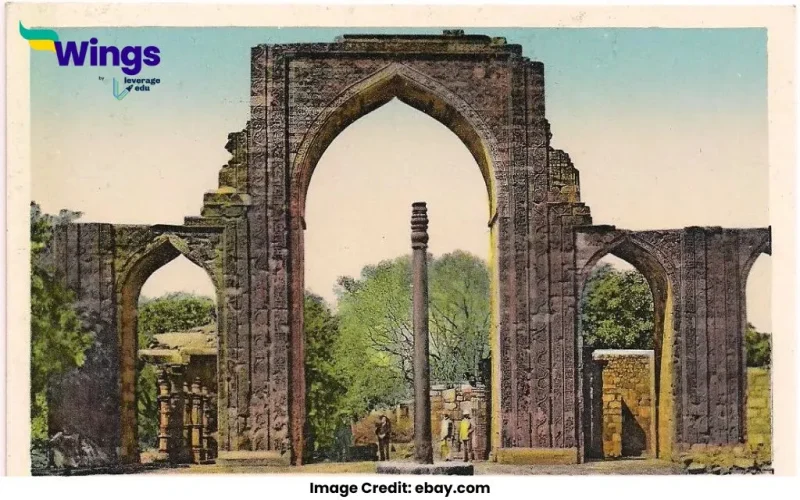Answer: The correct answer for ‘The famous Mehrauli iron pillar inscription describes the conquest of’ is option C. Chandragupta II.
Complete Answer:
Option A. Chandra of Indraprastha: There is no historical evidence of a king named Chandra of Indraprastha who could be linked to this pillar. Indraprastha is an ancient city, but it is not associated with any king “Chandra” in this context.
Option B. Chandragupta Maurya: Chandragupta Maurya (321–297 BCE) was the founder of the Maurya Empire, who lived almost 600 years before the Gupta Empire. The iron pillar belongs to the Gupta Period (4th century CE) and has no connection with the Mauryan era.
Option C. Chandragupta II: The inscription on the Mehrauli Iron Pillar explicitly mentions the achievements of a king named Chandra, identified by historians as Chandragupta II Vikramaditya of the Gupta Empire (375–415 CE). It describes his military conquests, his devotion to Vishnu, and his contributions to the prosperity of his kingdom. Chandragupta II is celebrated for his victorious campaigns in northern and central India, consolidating the Gupta Empire‘s power.
Option D. Samudragupta: Samudragupta (c. 335–375 CE) was another great Gupta ruler, known for his extensive conquests, but the iron pillar inscription does not describe his achievements. The pillar specifically celebrates the victories of Chandragupta II Vikramaditya, who succeeded Samudragupta and expanded the empire further.
The famous Mehrauli iron pillar inscription describes the conquest of Chandragupta II, not any other ruler, making C the correct option.
History of the Mehrauli Iron Pillar
The Mehrauli Iron Pillar, located in the Qutub Complex in Delhi, is a remarkable example of ancient Indian metallurgy and engineering. It stands at a height of 7.2 meters (23.6 feet) and weighs approximately 6,000 kilograms. Dating back to the Gupta Period, around the 4th century CE, the pillar was originally erected by King Chandragupta II (c. 375–415 CE), also known as Chandragupta Vikramaditya, one of the most illustrious rulers of the Gupta Empire.
The pillar was likely first installed in Udayagiri (near Vidisha, Madhya Pradesh), where it may have been part of a Vishnu temple, before being moved to its present location in Mehrauli. Its relocation is believed to have occurred during the reign of the Tomar or Chauhan dynasties, though the exact timeline remains uncertain. The famous Mehrauli iron pillar describes the conquest of Chandragupta Vikramaditya or Chandragupta II.
The iron pillar is famous for its resistance to corrosion. This characteristic is attributed to the high-quality iron used and the specific manufacturing technique, including a protective layer of passive oxide film that prevents rusting.
Inscription on Mehrauli Iron Pillar
The inscription on the Mehrauli Iron Pillar is written in Sanskrit in the Brahmi script, typical of the Gupta Period. The famous Mehrauli iron pillar inscription describes the conquest of Chandragupta II in the following manner:
- Military ConqThe inscription highlights King Chandra’s military prowess, especially his victory over enemy territories, including Varṇā (modern Bengal) and territories beyond the Vindyas.
- The pillar was erected as a tribute to Lord Vishnu, as indicated by the mention of the king’s devotion to the deity. This aligns with Chandragupta II’s role as a patron of Hinduism.
- The king is praised for his valour, wisdom, and just governance. He is described as a great warrior who brought peace and prosperity to his empire.
- The inscription also records the king’s lofty ambitions to protect the dharma and his contributions to cultural and religious growth.
Common History Questions:
 60,000+ students trusted us with their dreams. Take the first step today!
60,000+ students trusted us with their dreams. Take the first step today!


 One app for all your study abroad needs
One app for all your study abroad needs










